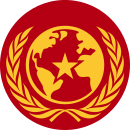More languages
More actions
Discord: puzzledfox99_32168
My contributions.
For my convenience: Template:Citation, Template:Video citation, Template:Web citation.
GSE 3rd ed.
My template for GSE citations:
{{Citation|author=[ ]|year=[ ]|chapter=[ ]|chapter-url=https://encyclopedia2.thefreedictionary.com/[ ]|title=[[Great Soviet Encyclopedia]] (3rd ed.)|volume=[ ]|page=[ ]|city=Moscow|pdf=https://ia804601.us.archive.org/2/items/B-001-032-507-748-ALL/[ ].pdf|trans-title=Boljšaja sovjetskaja enciklopjedija|trans-lang=Russian}}
Evidence against "Judeo-Bolshevism"
Thomas Henry Rigby (historian, unknown background but probably Gentile, unknown ideology)[1]:
| Nationality | Percent of party 1922 |
1927 |
Percent of population 1926 |
|---|---|---|---|
| Great Russians | 72.0 | 65.0 | 52.9 |
| Ukrainians | 5.9 | 11.7 | 21.2 |
| Belorussians | 1.5 | 3.2 | 3.2 |
| Poles, Latvians, and other Baltic peoples | 4.6 | 2.6 | 0.7 |
| Jews | 5.2 | 4.3 | 1.8 |
| Minority peoples in R.S.F.S.R. | 2.0 | 2.3 | 4.3 |
| Transcaucasian peoples | 3.4 | 3.6 | 2.5 |
| Central Asians (incl. Kazakhs) | 2.5 | 3.5 | 7.0 |
| Others | 2.9 | 3.8 | 6.4 |
| 3 SOURCES: Izv Ts K, Nos. 7-8, August-September 1923, p. 61, Sotsial'nyi i natsional'nyi sostav VKP(b), p. 114, Lorimer, op.cit., pp. 55-61. The 1922 figures cover members and candidates, the 1927 figures, members only. For additional details on national representa- tion at this period, see Fainsod, How Russia Is Ruled, p. 219. On the growth of party organizations in minority areas between 1922 and 1927, see Sotsial'nyi i natsional'nyi sostav VKP(b), p. 117. | |||
Jeffrey Herf (Jewish liberal/Zionist historian, would probably be dismissed by antisemites but whatever)[2]:
- Given Nazi claims about "Jewish Bolshevism," it is important to take note of the actual role of Jews in Soviet political life. Drawing on data gathered at the annual party congresses of the Communist Party of the Soviet Union, the historian Benjamin Pinkus has assessed the statistical and organizational representation of Jews within the power institutions of the party-the Central Committee, Politburo, Secretariat, and government bureaucracies. He concludes that there was "no historical basis" for claims that the Bolshevik regime was the work of the Jews. As of 1917, roughly 1,000, or about 5 percent, of the 23,000 members of the Bolshevik party were Jewish. By August 1917, 6 of 21 members of the Central Committee were Jews: Lev Kamenev, Grigory Sokolnikov, Jakov Sverdlov, Grigory Zinoviev, Leon Trotsky, and Moisei Uritsky. The party census of 1922 showed 19,564 Jewish members, 5.21 percent of the total. By 1927, the 49,627 Jewish members comprised 4.34 percent of all party members. Pinkus estimated no Jews remained in the Politburo. In the Stalin era in the 1930s, Lazar tral Executive Committee, the party Central Committee, the Presidium. the ministers, and the chairman of the Executive Committee), 27, or 6 percent, were Jewish. This proportion decreased radically in the 1930s, partly owing to the purge trials, which had strong anti-Semitic overtones. During the Holocaust, the Stalin regime said very little about Nazi policies aimed specifically at Jews. By fall 1943, and perhaps earlier, the Nazi death camps were within range of the Soviet air force. Yet Stalin did not order it to destroy the gas chambers and crematoria. the percentage of Jewish members of the party in 1940 at 4.3 percent or less. By 1939, only 10 percent of the Central Committee was composed of Jews. After Trotsky, Kamenev, and Zinoviev had been ousted from the leadership in 1926, Kaganovich became the only Jewish member of the Politburo-the exception that proved the rule. Of the 417 people who constituted the ruling elite of the Soviet Union in the mid-1920s (members of the Cen- of the Executive of the Soviets of the USSR and the Russian Republic, Thus, Nazi propaganda about Jewish domination of the Soviet regime had no basis in reality. It was a complete fantasy.
References
- ↑ Thomas Henry Rigby (2019). Communist Party Membership in the U.S.S.R. (p. 366). Princeton, NJ: Princeton University Press.
- ↑ Jeffrey Herf (2006). The Jewish Enemy: Nazi Propaganda during World War II and the Holocaust (pp. 95-96). Cambridge, MA: Harvard University Press.
